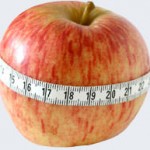Depression is a common but serious illness. Major depressive disorder  is one of the most common mental disorders in the United States. Each year about 6.7% of U.S adults experience major depressive disorder. Women are 70 % more likely than men to experience depression during their lifetime. The average age of onset is 32 years old. Additionally, 3.3% of 13 to 18 year olds have experienced a seriously debilitating depressive disorder. Everyone occasionally feels blue or sad. But these feelings are usually short-lived and pass within a couple of days. When you have depression, it interferes with daily life and causes pain for both you and those who care about you. In some cultures, symptoms of depression are often seen as a punishment or curse, and the person experiencing depression is stigmatized by family. In African countries as well as in the U.S., these cultural interpretations of depression can cause some people not to seek treatment. Check these websites for a global perspective on metal health topics: International Mental Health Research Organization www.imhro.org, World federation For Mental Health wfmh.com; World Health Organization www.who.int/mental_health.
is one of the most common mental disorders in the United States. Each year about 6.7% of U.S adults experience major depressive disorder. Women are 70 % more likely than men to experience depression during their lifetime. The average age of onset is 32 years old. Additionally, 3.3% of 13 to 18 year olds have experienced a seriously debilitating depressive disorder. Everyone occasionally feels blue or sad. But these feelings are usually short-lived and pass within a couple of days. When you have depression, it interferes with daily life and causes pain for both you and those who care about you. In some cultures, symptoms of depression are often seen as a punishment or curse, and the person experiencing depression is stigmatized by family. In African countries as well as in the U.S., these cultural interpretations of depression can cause some people not to seek treatment. Check these websites for a global perspective on metal health topics: International Mental Health Research Organization www.imhro.org, World federation For Mental Health wfmh.com; World Health Organization www.who.int/mental_health.
Many people with a depressive illness never seek treatment. But the majority, even those with the most severe depression, can get better with treatment. Medications, psychotherapies, and other methods can effectively treat people with depression. Once diagnosed, a person with depression can be treated in several ways. The most common treatments are medication and psychotherapy. With the depressed person’s cooperation in their care, a mental health specialist will find the best treatment option. More information about depression can be found on the National Institute on Mental Health (NIMH) NIMH website.
Some types of depression tend to run in families. However, people without family histories of depression can experience depression too. Scientists are studying certain genes that may make some people more prone to depression. Some genetics research indicates that risk for depression results from the influence of several genes acting together with environmental or other factors. In addition, trauma, loss of a loved one, a difficult relationship, or any stressful situation may trigger a depressive episode. Other depressive episodes may occur with or without an obvious trigger. Most likely, depression is caused by a combination of genetic, biological, environmental, and psychological factors. Lack of coping skills developed through spirituality, family support can also make it easier for a person to become depressed
There are several forms of depressive disorders.
Major depressive disorder, or major depression, is characterized by a combination of symptoms that interfere with a person’s ability to work, sleep, study, eat, and enjoy once-pleasurable activities. Major depression is disabling and prevents a person from functioning normally. Some people may experience only a single episode within their lifetime, but more often a person may have multiple episodes.
Dysthymic disorder, or dysthymia, is characterized by long-term (2 years or longer) symptoms that may not be severe enough to disable a person but can prevent normal functioning or feeling well. People with dysthymia may also experience one or more episodes of major depression during their lifetimes.
Minor depression is characterized by having symptoms for 2 weeks or longer that do not meet full criteria for major depression. Without treatment, people with minor depression are at high risk for developing major depressive disorder.
Some forms of depression are slightly different, or they may develop under unique circumstances. However, not everyone agrees on how to characterize and define these forms of depression. They include:
- Psychotic depression, which occurs when a person has severe depression plus some form of psychosis, such as having disturbing false beliefs or a break with reality (delusions), or hearing or seeing upsetting things that others cannot hear or see (hallucinations).
- Postpartum depression, which is much more serious than the “baby blues” that many women experience after giving birth, when hormonal and physical changes and the new responsibility of caring for a newborn can be overwhelming. It is estimated that 10 to 15 percent of women experience postpartum depression after giving birth.
- Seasonal affective disorder (SAD), which is characterized by the onset of depression during the winter months, when there is less natural sunlight. The depression generally lifts during spring and summer. SAD may be effectively treated with light therapy, but nearly half of those with SAD do not get better with light therapy alone. Antidepressant medication and psychotherapy can reduce SAD symptoms, either alone or in combination with light therapy.
Signs & Symptoms
Signs and symptoms include:
- Persistent sad, anxious, or “empty” feelings
- Feelings of hopelessness or pessimism
- Feelings of guilt, worthlessness, or helplessness
- Irritability, restlessness
- Loss of interest in activities or hobbies once pleasurable, including sex
- Fatigue and decreased energy
- Difficulty concentrating, remembering details, and making decisions
- Insomnia, early-morning wakefulness, or excessive sleeping
- Overeating, or appetite loss
- Thoughts of suicide, suicide attempts
- Aches or pains, headaches, cramps, or digestive problems that do not ease even with treatment
If you start missing days from work, have difficulty getting out of bed in the morning, experience any of the above symptoms, speak to your primary care provider. He or she can refer you to a mental health specialist. Depression, even the most severe cases, can be effectively treated. The earlier that treatment can begin, the more effective it is. Untreated depression can also lead to physical health problems. Alcohol and other substance abuse or dependence may also co-exist with depression. Research shows that mood disorders and substance abuse commonly occur together.
Women, Men, & Children Living With Depression
How do women experience depression?
Depression is more common among women than among men. Biological, life cycle, hormonal, and psychosocial factors that women experience may be linked to women’s higher depression rate. Researchers have shown that hormones directly affect the brain chemistry that controls emotions and mood. For example, women are especially vulnerable to developing postpartum depression after giving birth, when hormonal and physical changes and the new responsibility of caring for a newborn can be overwhelming.
Some women may also have a severe form of premenstrual syndrome (PMS) called premenstrual dysphoric disorder (PMDD). PMDD is associated with the hormonal changes that typically occur around ovulation and before menstruation begins.
During the transition into menopause, some women experience an increased risk for depression. In addition, osteoporosis—bone thinning or loss—may be associated with depression. Scientists are exploring all of these potential connections and how the cyclical rise and fall of estrogen and other hormones may affect a woman’s brain chemistry.
Finally, many women face the additional stresses of work and home responsibilities, caring for children and aging parents, abuse, poverty, and relationship strains. It is still unclear, though, why some women faced with enormous challenges develop depression, while others with similar challenges do not.
How do men experience depression?
Men often experience depression differently than women. While women with depression are more likely to have feelings of sadness, worthlessness, and excessive guilt, men are more likely to be very tired, irritable, lose interest in once-pleasurable activities, and have difficulty sleeping.
Men may be more likely than women to turn to alcohol or drugs when they are depressed. They also may become frustrated, discouraged, irritable, angry, and sometimes abusive. Some men throw themselves into their work to avoid talking about their depression with family or friends, or behave recklessly. And although more women attempt suicide, many more men die by suicide in the United States.
How do older adults experience depression?
Depression is not a normal part of aging. Studies show that most seniors feel satisfied with their lives, despite having more illnesses or physical problems. However, when older adults do have depression, it may be overlooked because seniors may show different, less obvious symptoms. They may be less likely to experience or admit to feelings of sadness or grief.
Sometimes it can be difficult to distinguish grief from major depression. Grief after loss of a loved one is a normal reaction to the loss and generally does not require professional mental health treatment. However, grief that is complicated and lasts for a very long time following a loss may require treatment. Researchers continue to study the relationship between complicated grief and major depression.
Older adults also may have more medical conditions such as heart disease, stroke, or cancer, which may cause depressive symptoms. Or they may be taking medications with side effects that contribute to depression. Some older adults may experience what doctors call vascular depression, also called arteriosclerotic depression or subcortical ischemic depression. Vascular depression may result when blood vessels become less flexible and harden over time, becoming constricted. Such hardening of vessels prevents normal blood flow to the body’s organs, including the brain. Those with vascular depression may have, or be at risk for, co-existing heart disease or stroke.
Although many people assume that the highest rates of suicide are among young people, older white males age 85 and older actually have the highest suicide rate in the United States. Many have a depressive illness that their doctors are not aware of, even though many of these suicide victims visit their doctors within 1 month of their deaths.
Most older adults with depression improve when they receive treatment with an antidepressant, psychotherapy, or a combination of both. Research has shown that medication alone and combination treatment are both effective in reducing depression in older adults. Psychotherapy alone also can be effective in helping older adults stay free of depression, especially among those with minor depression. Psychotherapy is particularly useful for those who are unable or unwilling to take antidepressant medication.
How do children and teens experience depression?
Children who develop depression often continue to have episodes as they enter adulthood. Children who have depression also are more likely to have other more severe illnesses in adulthood.
A child with depression may pretend to be sick, refuse to go to school, cling to a parent, or worry that a parent may die. Older children may sulk, get into trouble at school, be negative and irritable, and feel misunderstood. Because these signs may be viewed as normal mood swings typical of children as they move through developmental stages, it may be difficult to accurately diagnose a young person with depression.
Before puberty, boys and girls are equally likely to develop depression. By age 15, however, girls are twice as likely as boys to have had a major depressive episode.
Depression during the teen years comes at a time of great personal change—when boys and girls are forming an identity apart from their parents, grappling with gender issues and emerging sexuality, and making independent decisions for the first time in their lives. Depression in adolescence frequently co-occurs with other disorders such as anxiety, eating disorders, or substance abuse. It can also lead to increased risk for suicide.
An NIMH-funded clinical trial of 439 adolescents with major depression found that a combination of medication and psychotherapy was the most effective treatment option. Other NIMH-funded researchers are developing and testing ways to prevent suicide in children and adolescents.
Childhood depression often persists, recurs, and continues into adulthood, especially if left untreated.
How can I help a loved one who is depressed?
If you know someone who is depressed, it affects you too. The most important thing you can do is help your friend or relative get a diagnosis and treatment. You may need to make an appointment and go with him or her to see the doctor. Encourage your loved one to stay in treatment, or to seek different treatment if no improvement occurs after 6 to 8 weeks.
To help your friend or relative
- Offer emotional support, understanding, patience, and encouragement.
- Talk to him or her, and listen carefully.
- Never dismiss feelings, but point out realities and offer hope.
- Never ignore comments about suicide, and report them to your loved one’s therapist or doctor.
- Invite your loved one out for walks, outings and other activities. Keep trying if he or she declines, but don’t push him or her to take on too much too soon.
- Provide assistance in getting to the doctor’s appointments.
- Remind your loved one that with time and treatment, the depression will lift.
How can I help myself if I am depressed?
If you have depression, you may feel exhausted, helpless, and hopeless. It may be extremely difficult to take any action to help yourself. But as you begin to recognize your depression and begin treatment, you will start to feel better.
To Help Yourself
- Do not wait too long to get evaluated or treated. There is research showing the longer one waits, the greater the impairment can be down the road. Try to see a professional as soon as possible.
- Try to be active and exercise. Go to a movie, a ballgame, or another event or activity that you once enjoyed.
- Set realistic goals for yourself.
- Break up large tasks into small ones, set some priorities and do what you can as you can.
- Try to spend time with other people and confide in a trusted friend or relative. Try not to isolate yourself, and let others help you.
- Expect your mood to improve gradually, not immediately. Do not expect to suddenly “snap out of” your depression. Often during treatment for depression, sleep and appetite will begin to improve before your depressed mood lifts.
- Postpone important decisions, such as getting married or divorced or changing jobs, until you feel better. Discuss decisions with others who know you well and have a more objective view of your situation.
- Remember that positive thinking will replace negative thoughts as your depression responds to treatment.
- Remove/minimize refined sugars from your diet. Refined sugars have been linked to causing negative chemical reactions in the body. Use whole wheat breads, pastas, rice, use honey for sweetner.
- Continue to educate yourself about depression.




 Weight control means weight maintenance that is suitable to your individual body needs—not necessarily eating to lose or gain weight. Your goal in weight control should be disease prevention. One of the major factors causing disease is excessive weight for your body structure.
Weight control means weight maintenance that is suitable to your individual body needs—not necessarily eating to lose or gain weight. Your goal in weight control should be disease prevention. One of the major factors causing disease is excessive weight for your body structure. With industrialization in urban areas, the increase in environmental toxins is prevalent worldwide. Toxins are chemicals in our water, air, soil that can put us at risk for disease. Due to financial constraints, populations of color tend to live in more physically congested areas at risk for increased exposure to environmental toxins.
With industrialization in urban areas, the increase in environmental toxins is prevalent worldwide. Toxins are chemicals in our water, air, soil that can put us at risk for disease. Due to financial constraints, populations of color tend to live in more physically congested areas at risk for increased exposure to environmental toxins. Pregnancy & Childbirth: U.S. Spends $26.2 Billion Annually On Premature BirthsAccording to the Institute of Medicine (IOM) Preterm birth costs the United States government 26 billion dollars per year, $51,000 per premature baby. The March of Dimes notes costs of premature birth as 26.2 billion annually. The March of Dimes also notes that 1 in 9 babies in the United States is born prematurely. Premature birth is infant birth before 37 weeks gestation. A healthy birth should take place between 37 and 40 weeks gestation.
Pregnancy & Childbirth: U.S. Spends $26.2 Billion Annually On Premature BirthsAccording to the Institute of Medicine (IOM) Preterm birth costs the United States government 26 billion dollars per year, $51,000 per premature baby. The March of Dimes notes costs of premature birth as 26.2 billion annually. The March of Dimes also notes that 1 in 9 babies in the United States is born prematurely. Premature birth is infant birth before 37 weeks gestation. A healthy birth should take place between 37 and 40 weeks gestation.
 is one of the most common mental disorders in the United States. Each year about 6.7% of U.S adults experience major depressive disorder. Women are 70 % more likely than men to experience depression during their lifetime. The average age of onset is 32 years old. Additionally, 3.3% of 13 to 18 year olds have experienced a seriously debilitating depressive disorder. Everyone occasionally feels blue or sad. But these feelings are usually short-lived and pass within a couple of days. When you have depression, it interferes with daily life and causes pain for both you and those who care about you. In some cultures, symptoms of depression are often seen as a punishment or curse, and the person experiencing depression is stigmatized by family. In African countries as well as in the U.S., these cultural interpretations of depression can cause some people not to seek treatment. Check these websites for a global perspective on metal health topics: International Mental Health Research Organization
is one of the most common mental disorders in the United States. Each year about 6.7% of U.S adults experience major depressive disorder. Women are 70 % more likely than men to experience depression during their lifetime. The average age of onset is 32 years old. Additionally, 3.3% of 13 to 18 year olds have experienced a seriously debilitating depressive disorder. Everyone occasionally feels blue or sad. But these feelings are usually short-lived and pass within a couple of days. When you have depression, it interferes with daily life and causes pain for both you and those who care about you. In some cultures, symptoms of depression are often seen as a punishment or curse, and the person experiencing depression is stigmatized by family. In African countries as well as in the U.S., these cultural interpretations of depression can cause some people not to seek treatment. Check these websites for a global perspective on metal health topics: International Mental Health Research Organization  Most health care providers in the U.S. have determined that African-American children are more likely than other ethnic groups to experience Asthma. However, studies published by the National Institute of Health (NIH) link Asthma to Vitamin D deficiency.
Most health care providers in the U.S. have determined that African-American children are more likely than other ethnic groups to experience Asthma. However, studies published by the National Institute of Health (NIH) link Asthma to Vitamin D deficiency.